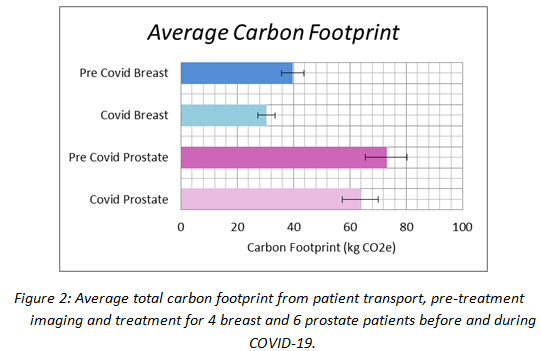Estimating the carbon footprint of the radiotherapy pathway and changes in response to COVID-19
Robert Chuter,
United Kingdom
PO-1058
Abstract
Estimating the carbon footprint of the radiotherapy pathway and changes in response to COVID-19
Authors: James Cummings1, Clare Taylor1, Robert Chuter1,2
1The Christie NHS Foundation Trust, Radiotherapy, Manchester, United Kingdom; 2University of Manchester, Manchester Cancer Research Centre, Manchester, United Kingdom
Show Affiliations
Hide Affiliations
Purpose or Objective
The aim of this project is to
quantify the carbon footprint of patients within our breast and prostate
radiotherapy pathways. In addition, this project will consider the consequence
of the COVID-19 pandemic on these emissions as a result of altering our
standard procedures. We aim to find carbon footprint hotspots in the patient
pathway to highlight where changes are needed.
Material and Methods
To estimate carbon emissions,
energy consumption of an Elekta VersaHD linac was recorded for a sample of 4 breast
and 6 prostate patients both pre (Jan-Mar 2020) and during COVID-19 (Jan-Mar
2021). An average measurement of the idle power consumption of the linac was
also taken. Values for energy consumption due to pre-treatment imaging were
also taken into account, using values from literature. Using patient notes, an
estimate of travel emissions for pre/post-treatment appointments and treatment
fractions was also calculated. All patients were assumed to travel by petrol
car with a low fuel economy to provide a worst-case estimate.
Changes to the standard
pathway as a result of COVID-19 were incorporated into analysis, including
additional appointments for COVID testing, increased number of telephone
consultations and changes in fractionation.
Results
Figure 1 shows the linac power
consumption for a full course breast IMRT, prostate VMAT and prostate SABR
treatments. A reduction in treatment power consumption can be seen due to the
reduction in number of breast fractions during COVID-19; however the reverse is
seen for prostate VMAT, despite no changes in fractionation. This is likely due
to the small sample.

Despite higher power consumption per
fraction, the reduced number of fractions used for prostate SABR treatments
results in lower overall power relative to prostate VMAT. The power incurred by
on-set imaging was negligible with respect to the idle power consumption of a
linac and has therefore been ignored for the purpose of these results.
Figure 2 shows the average carbon
footprint for each patient pathway. The reduction in fractionation, and
therefore the number of appointments, results in a decrease in overall
footprint for breast patients during COVID-19. Similarly, the introduction of
prostate SABR also leads to an overall reduction in carbon footprint for the
prostate pathway.

Conclusion
These
preliminary results have demonstrated the environmental impact of patient
pathways in radiotherapy, and how a response to COVID-19 has affected this. On-going
work will expand this analysis to include more aspects of the patient pathway.